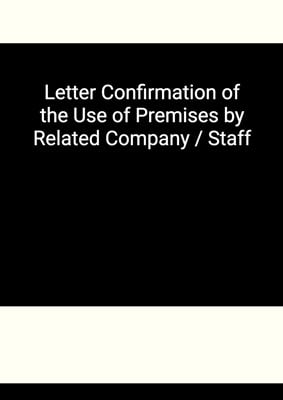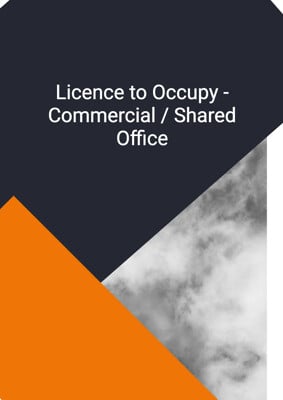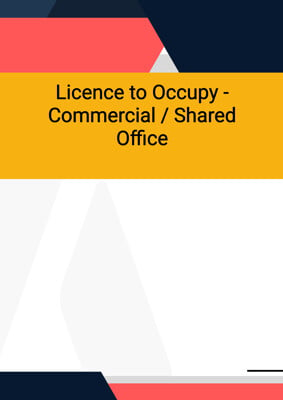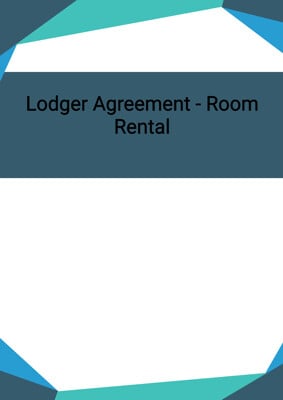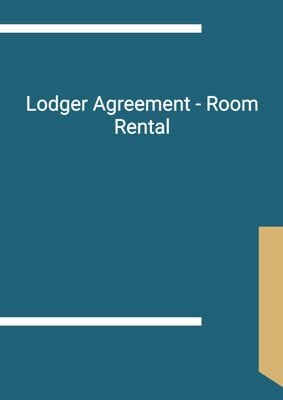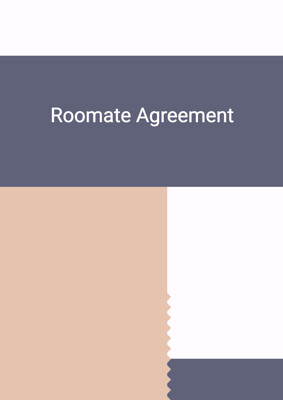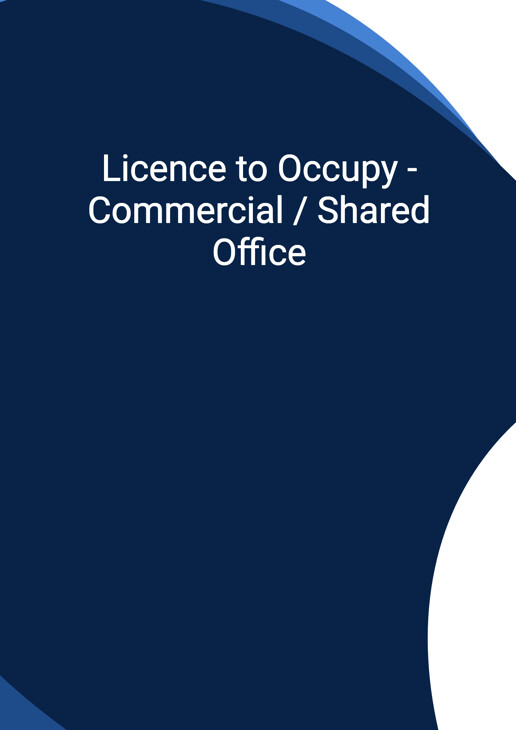
Licence to Occupy - Commercial / Shared Office
Licensee
Licence giving the licensee the right to occupy the commercial property for a defined length of time. A licensee has only a personal interest and this interest can be revoked by the landowner at any time. This is shared office arrangement drafted in favour of the Licensee.
How to Tailor the Document for Your Need?
01
Create Document
Fill in the details of the parties. You can click the "Fill with Member’s Information" button to complete it with information saved to your account.
02
Fill Information
Please fill in any additional information by following the step-by-step guide on the left hand side of the preview document and click the "Next" button.
03
Get Document
When you are done, click the "Get Document" button and you can download the document in Word or PDF format.
04
Review Document
Please get all parties to review the document carefully and make any final modifications to ensure that the details are correct before signing the document.
Document Preview
Document Description
This document is a Licence to Occupy - Commercial / Shared Office. It is a legal agreement entered into between the licensor and the licensee. The document grants the licensee permission to use a designated desk and/or office space at a specified premises for a certain term. The licensor is responsible for ensuring the legality of the premises and maintaining it in a tenantable condition. The licensee is responsible for promptly paying the licence fee, deposit, and other charges. The document also includes provisions regarding the exclusive right to the space, termination of the licence, and miscellaneous terms. The entire document consists of several sections.
Section 1: Licence
This section grants the licensee personal permission to use the designated space at the premises for a specified term. It also mentions the fixtures, fittings, and equipment included in the licence.
Section 2: Licence Fee
This section specifies the currency rent for the licence fee, which is payable on a periodic basis. It also mentions the payment due dates and the consequences of late payment.
Section 3: Deposit
This section states the amount of the deposit and the timeline for its payment. It also outlines the circumstances under which the licensor can retain part or all of the deposit as compensation.
Section 4: Other Charges
This section explains the inclusions in the licence fee, such as the exclusive right to occupy the space, use of facilities, cleaning, and insurance. It also mentions the additional charges payable by the licensee according to consumption.
Section 5: Licensor's Responsibilities
This section outlines the responsibilities of the licensor, including ensuring the legality of the premises and maintaining its structural parts. It also mentions the licensor's obligation to repair and remedy any defects.
Section 6: Licensee's Responsibilities
This section lists the responsibilities of the licensee, such as prompt payment of fees and charges, proper use of the space, and restrictions on alterations and residential use.
Section 7: Termination of the Licence
This section explains the circumstances under which the licensor can terminate the licence, including non-payment by the licensee or material breach of the agreement. It also mentions the licensee's right to serve a notice to end the licence.
Section 8: Exclusive Right to the Space
This section states that the licensee has the exclusive right to the space during the licence period, and the licensor cannot enter without permission.
Section 9: Miscellaneous
This section includes general provisions, such as the entire agreement between the parties, the validity of the licence despite void or unenforceable provisions, and waiver of breach.
Section 10: No Rights Under Contracts for Third Parties
This section clarifies that third parties have no rights to enforce the terms of the licence.
Section 11: Law and Jurisdiction
This section specifies the governing law and jurisdiction for the document.
Section 12: Notices and Service
This section explains the methods and timing of serving notices between the parties, including delivery by hand, email, or post. It also provides the addresses of the parties for the purpose of serving notices.
The document concludes with the signatures of the duly authorized representatives of the licensor and the licensee.
How to use this document?
1. Enter the necessary information: Fill in the names and principal places of business of both the licensor and the licensee in the agreement. Make sure to accurately identify both parties.
2. Specify the licence details: Clearly state the term of the licence, including the duration and the designated desk and/or office space at the premises. Provide a description of the fixtures, fittings, and equipment included in the licence.
3. Determine the licence fee: Agree on the currency rent for the licence fee, which should be payable on a periodic basis. Include any additional items or fees listed in the schedule.
4. Arrange for deposit payment: Specify the amount of the deposit and the timeline for its payment. Clarify the circumstances under which the licensor can retain part or all of the deposit as compensation.
5. Clarify inclusions in the licence fee: Clearly state the inclusions, such as the exclusive right to occupy the space, use of facilities, cleaning, and insurance. If applicable, mention any additional charges payable by the licensee according to consumption.
6. Ensure licensor's responsibilities: Verify that the licensor is responsible for ensuring the legality of the premises and maintaining its tenantable condition. Confirm that the licensor will repair and remedy any defects, except those caused by intentional behaviors or negligence of the licensee.
7. Understand licensee's responsibilities: Ensure that the licensee understands their responsibilities, including prompt payment of fees and charges, proper use of the space, and restrictions on alterations and residential use.
8. Familiarize with termination conditions: Be aware of the circumstances under which the licensor can terminate the licence, such as non-payment by the licensee or material breach of the agreement. Understand the licensee's right to serve a notice to end the licence.
9. Acknowledge exclusive right to the space: Recognize that the licensee has the exclusive right to the designated space during the licence period, and the licensor cannot enter without permission.
10. Review miscellaneous provisions: Read and understand the miscellaneous provisions, such as the entire agreement between the parties, the validity of the licence despite void or unenforceable provisions, and waiver of breach.
11. Note limitations on third-party rights: Understand that third parties have no rights to enforce the terms of the licence under any law.
12. Comply with law and jurisdiction: Ensure compliance with the governing law and jurisdiction specified in the document.
13. Follow the notice and service requirements: Serve notices by hand, email, or post according to the specified methods and timing. Use the provided addresses for the licensor and the licensee.
14. Obtain authorized signatures: Have the duly authorized representatives of the licensor and the licensee sign the document to finalize the agreement.
Not the right document?
Don’t worry, we have thousands of documents for you to choose from:
